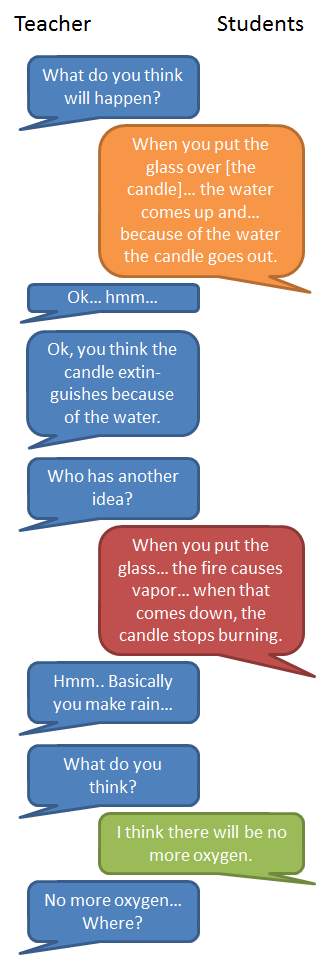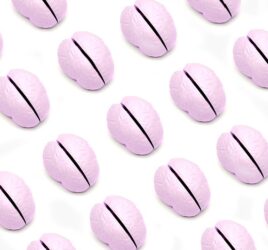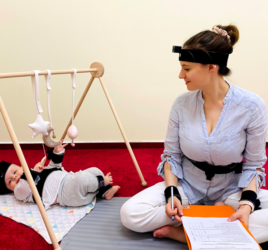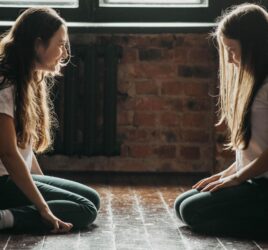
How to put scientific understanding of students in the picture?
Scientific understanding is considered increasingly important, both for science performance itself as for future adults in order to fully participate in society. The need for better scientific understanding in the population is stressed both from an individual perspective — concerning the individual’s life span development — and from a collective perspective, such as a country’s economy [1][2]. An important reason for this is that more technical and scientific scholars are needed to meet society’s current and future challenges and innovations.
However, international concern is raised about the limited numbers of students that pursue science and technological careers [2]. This concern is nourished by the fact that students’ natural curiosity, an important characteristic for science and technology, decreases over the course of elementary education [3]. An important question emerging from this concern is how to put scientific understanding of students in the picture in such a way that students’ natural curiosity and scientific understanding may eventually flourish. In this blog post, the focus will be on putting scientific understanding in the picture in the classroom situation as well as in educational research.
How to put scientific understanding of students in the picture in the classroom?
In 2006, a research program called Curious Minds (in Dutch: TalentenKracht [4]) was initiated to study young children’s talents for science and technology. In one of the projects of this research program, Wetzels and colleagues [5] bridged between educational research and practice by designing a Video Feedback Coaching program for lower grade teachers (VFCt; also see Annemie her blog post [6]). This intervention was developed to evoke change in teachers’ practice during science and technology lessons, in order to stimulate students’ scientific understanding [7].
In my project, we adapted this intervention to accommodate the needs of teachers teaching at the upper grade level [8]. In the intervention, teachers were supported to:
- design lessons that spark curiosity;
- use the empirical cycle to guide students’ thinking process [9];
- scaffold students’ understanding to higher levels [10];
- use open questions that elicit students’ scientific understanding [11].
To elicit behavioral change in the teachers, a promising method for implementing evidence-based instructional strategies, namely providing feedback on real-time behavior by means of VFC [12][13], was also adopted in this intervention. VFC [14] was used as a means to alert teachers on students’ scientific understanding and to focus on interactional sequences of high quality during their own lessons. VFCt is an effective means of supporting teachers to create more of those high-quality moments in order to stimulate students’ scientific understanding. For an example of such a high-quality moment, please see the illustration on the right. By critically reviewing and discussing video observations of a teacher’s own lessons together with the teacher, scientific understanding of students was literally put in the picture.
How to put scientific understanding of students in the picture in educational research?
Next to developing an intervention to improve teacher’s practice based on VFCt, we examined the following question: Could an increase in students’ scientific understanding be brought about by improving teacher’s practice by means of this intervention. In doing so, the complexity approach [15] enabled us to evaluate and analyze the VFCt on the micro-level (i.e., interactional sequences) in such a way that the development of students’ scientific understanding in interaction with the teacher’s practice could be brought into picture.
By zooming in on the interactional sequences, it has been found that complex levels of scientific understanding are achieved through a joint investment by teachers and students. Analyses of interaction patterns in several consecutive lessons enabled the investigation of the extent to which co-construction took a common form across different activities of learning. Interestingly, the analysis showed that even when classes are classified as having profited from the intervention, the process underlying this change is an example of typical idiosyncratic differences.
To be more specific, in different classrooms, change was characterized by different patterns of stability and instability in the interactions between teacher and students, which is illustrated by change trajectories of three teachers during the intervention. For teacher 1, change was characterized by a period in which the interaction appeared rather chaotic and random, followed by a stable pattern of preferred interaction. For teacher 2, change set in as he/she broadened (experimented with) the palette of types of interactions used and gradually moved into a more preferred pattern of interaction. Lastly, teacher 3 showed no clear signs of instability during the intervention period. This classroom showed a sudden ‘jump’ to another type of interaction. Furthermore, an observational focus on the richness of students’ social interaction in the classrooms provided detailed insights into both micro-changes, i.e. on the level of teacher-student interactions, and macro-changes, i.e. over the course of multiple lessons, in the co-construction of students’ cognitive development.
Conclusion: How to put scientific understanding of students in the picture?
To conclude, scientific understanding of students can be brought in the picture by analyzing video observations of several lessons. Hereby, VFCt is an important tool to establish behavioral change in teachers as it serves as an eye-opener with regard to the teacher’s own behaviors and the way it influences student behavior. In addition, these same video observations can be used to gain insight into the emergence and development of student’s behavior during actual science and technology lessons.
We argue that, if insight in developmental processes is to be gained, knowledge of the actual, concrete way in which something works on the level of real-time daily practice is vital – because that is the kind of information that is available to the teachers. This study shows that video observations in combination with (several types of) in-depth analyses support both teachers and educational research in gaining insight in the emergence and development of students’ scientific understanding. In other words, putting students’ scientific understanding in the picture is an effective way for changing patterns of interaction in the classroom, concurrently promoting students’ display of scientific understanding.
Relevant links and publications
[14] Fukkink, R. (2005). Effectonderzoek naar Video Interactie Begeleiding.




